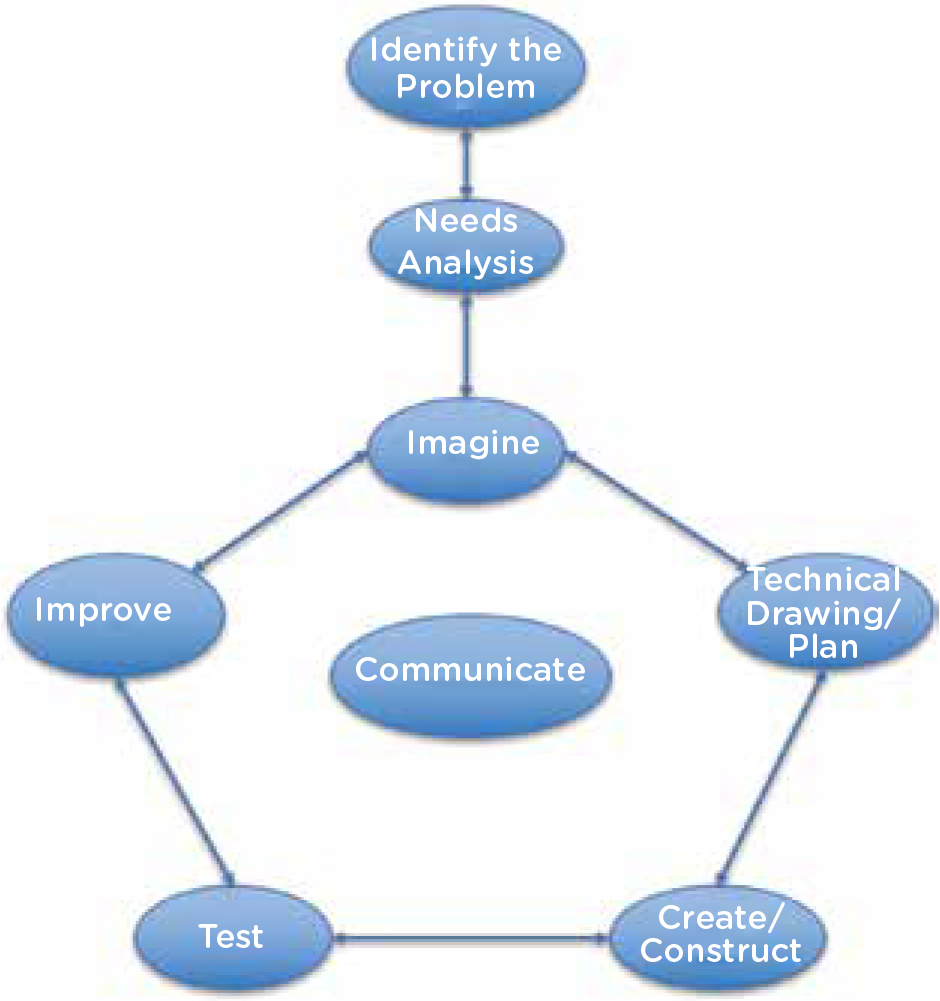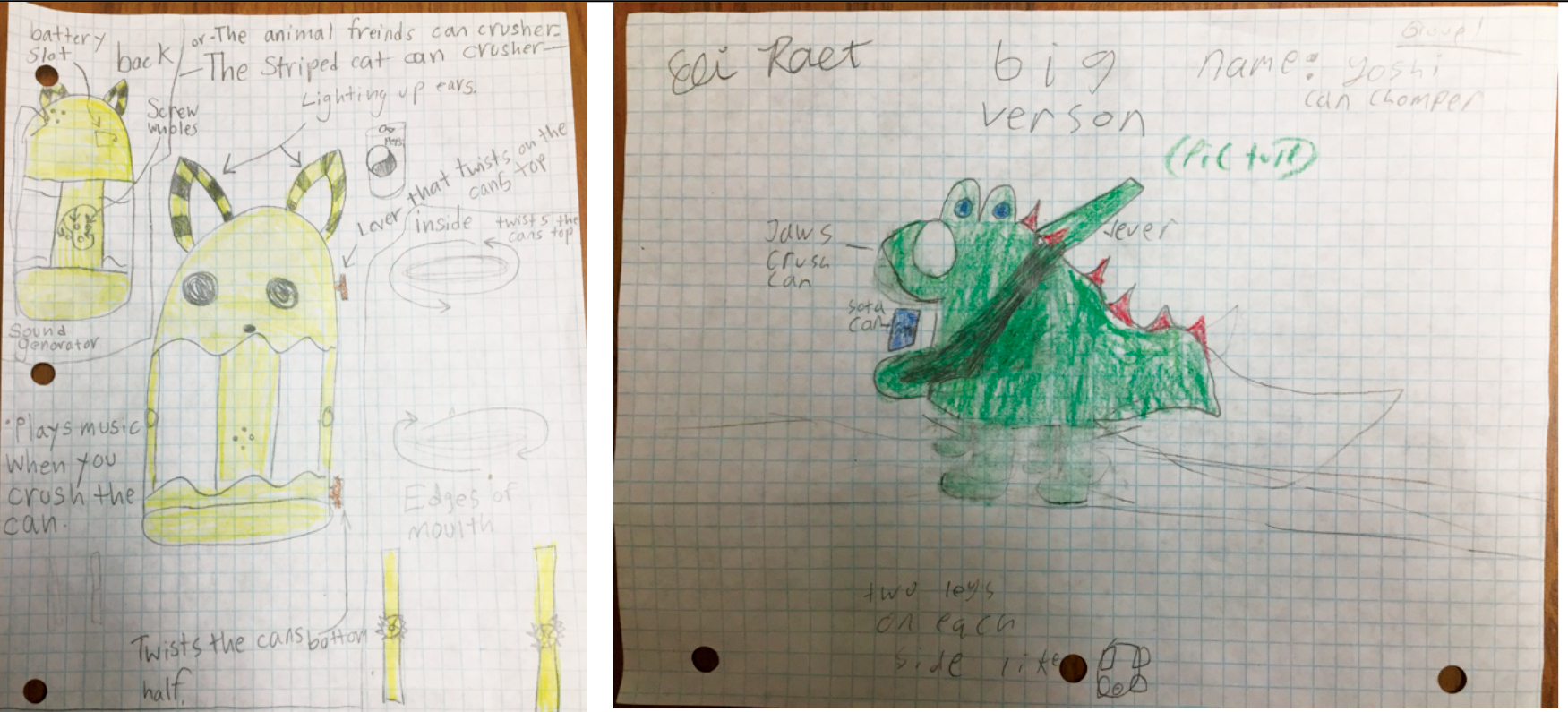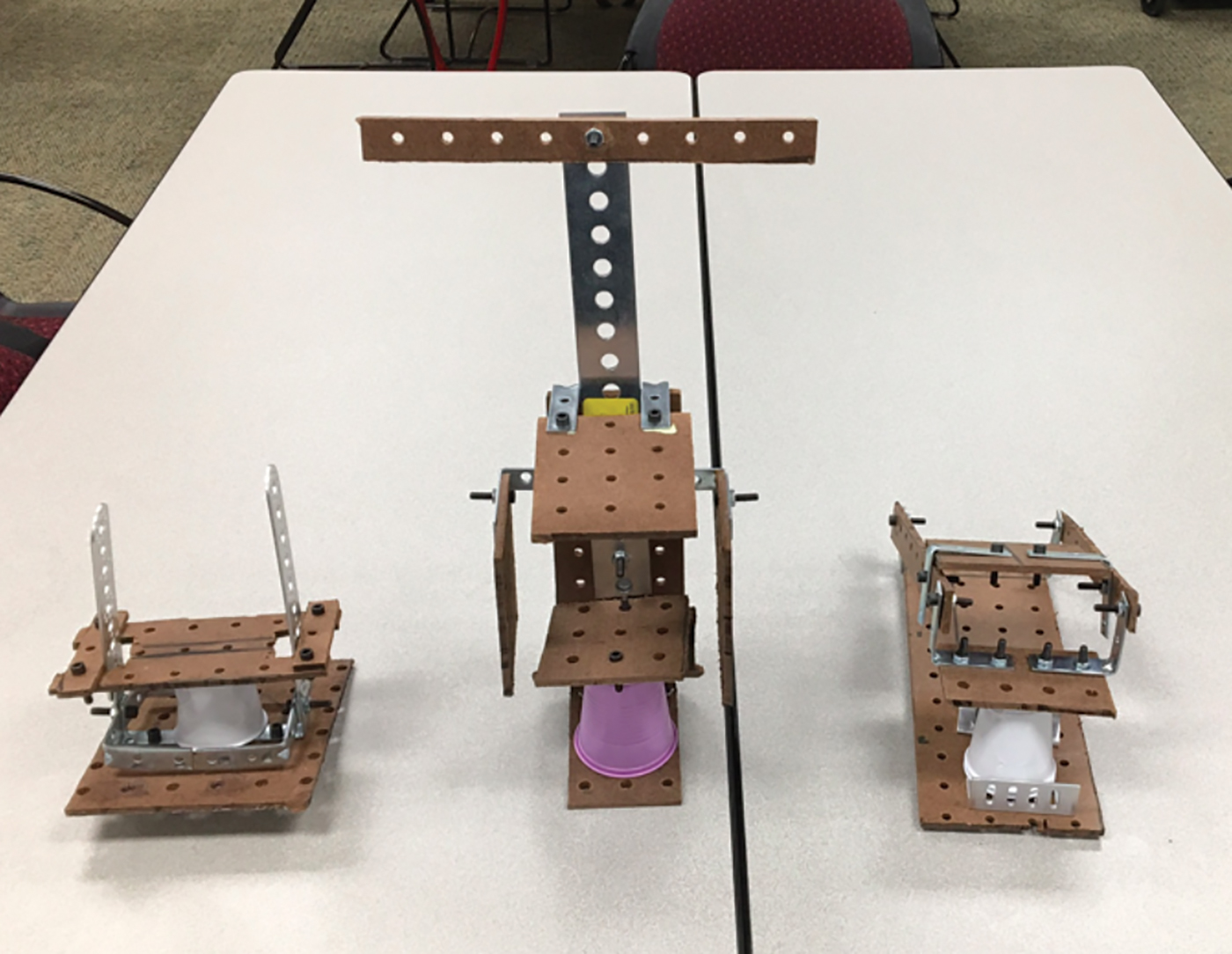Engineering Encounters
The Soda Can Crusher Challenge
Exposing Elementary Students to the Engineering Design Process
The Soda Can Crusher Challenge
By Hasan Deniz, Erdogan Kaya, and Ezgi Yesilyurt
Imagine a classroom full of elementary students designing soda can crushers to make storing empty cans for recycling more efficient, evaluating each other’s design ideas and giving each other feedback as if they are real engineers. We are seeing more of these types of activities since the release of the National Research Council’s Framework for K–12 Science Education (NRC 2011) and Next Generation Science Standards (NGSS Lead States 2013). These policy documents underscored the importance of engineering and elevated engineering design to the level of scientific inquiry.
However, most elementary teachers struggle to find time to teach science and engineering due to heavy emphasis on reading, writing, and math. However, at the elementary level, science or engineering instruction can be supported with language arts instruction, and there is a substantial amount of literature that supports this integration (Norris, et al. 2008; Yore, Pimm, and Taun 2007). Integrating science with appropriate reading and writing activities in the elementary grades can help students improve their reading and writing while they learn science content, and at the same time enable the inclusion of science teaching at the elementary level (Romance and Vitale 1992).
In this article, we describe how we engaged grade 3–5 students in an engineering design activity supported with relevant reading, writing, and talking tasks embedded within the engineering design activity. We think that our instructional approach is especially beneficial for English Language Learners (ELLs), providing genuine venues to practice their reading, writing, and talking. Students from public and charter schools in a southwestern U.S. school district attended a Saturday STEM course offered by the local university for five weeks. All five weeks were devoted to the engineering design challenge and students worked on the design challenge from 9:30 a.m. to noon for five consecutive Saturdays. Students worked in groups of three to four to design soda can crushers (for crushing paper cups due to our own constraints) with our guidance.
Introduction to the Engineering Design Process
We started our Saturday STEM course by reading the books Engineering Elephants and Designing Dandelions (see Resources). Engineering Elephants gave students a general idea about what engineers can or cannot do. Designing Dandelions introduces the engineering design process through a fictional story of aliens trying to repair their spaceship. We found these books helpful to introduce engineering and engineering design process to elementary students. Each page in Engineering Elephants starts with a statement such as “Engineers make elephants with long, swinging trunks. Wait a minute…”and then the next page follows with a question and an answer “Do engineers really make elephants? No, but they do make roller coasters!” The book continues in the same format with different examples. After reading a few examples, students altogether started to shout “No” after each question. In addition to the fictional story, Designing Dandelions provides a diagram of the engineering design process. We told our students that similar to the characters in the story, they will apply the engineering design process to solve a different problem.
Presenting the Problem
We made a short presentation about the importance of soda can recycling, including facts such as:
- Americans recycle 1 billion aluminum soda cans each year,
- Recycling aluminum saves more than 90% of the energy required vs. producing the new material, and
- Aluminum cans can be recycled and back on the shelf in less than 60 days.
We thought that addressing a real-world problem such as finding an effective way to store soda cans for recycling would sustain our students’ engagement during the engineering design process. Our soda can crushers would aid society’s recycling efforts by making soda cans easy to store and carry to the recycling plants. We followed the engineering design process cycle depicted in Figure 1.

Needs Analysis
We conducted a quick in-class needs analysis (see NSTA Connection) to determine whether students need a soda can crusher, how much money they are willing to spend on a soda can crusher, and what qualities they are looking for in a soda can crusher at the beginning of the program. Students created a bar graph for each question in the needs analysis by placing sticky notes into the appropriate places in each graph displayed on the board (see Figure 2).

We also asked students to conduct the same needs analysis questionnaire with 10 adults whom they can contact with the help of their parents. Each student brought their data to the class and we combined the data in an Excel spreadsheet, which automatically created bar graphs for each question. At the end of the needs analysis, students realized that they should construct soda can crushers by considering the following five criteria:
- The soda can crusher should easily be operated by anyone including children who are at least nine years old.
- The soda can crusher should consistently do the job without misfiring. T
- he soda can crusher should be easily stored under a kitchen sink.
- The soda can crusher should be easily carried to another place.
- The soda can crusher should be visually appealing to most people.
This experience allowed us to make our needs analysis more realistic and embed our soda can crusher design experience into a real human problem.
Imagine
We read the book Coppernickel the Invention by Wouter van Reek (2006) before each group started imagining their soda can crusher design ideas. This book tells the story of two friends (Coppernickel and Tungsten) who attempt to design a machine or tool for picking up high-hanging elderberries. The movie version of this book is also available online (see Internet Resources). The book conveys the message that a simple design idea can be more effective than seemingly elaborate design ideas. We asked the students to individually sketch their soda can crusher design idea on a piece of paper, reminding them about the message of the book Coppernickel the Invention. Then, students as a group discussed each design idea in light of the criteria described in the needs analysis phase.
Students discussed their design ideas within their small group. All of the groups except one group agreed on a design idea without difficulty. In one group, a student did not agree with the design idea that was accepted with other members of the group. We ended up placing this particular student in another group whose design idea was appealing to her.
Finally, students reached a consensus on a design idea. Their initial design ideas included parts that are operated by electricity. Each group had to modify their design ideas when we introduced the materials and tools that were available for them during the construction process. We intentionally did not introduce the available materials and tools before we asked them to brainstorm their designs because we did not want to limit their creativity and imagination. Later, we told the students that engineers should also modify their design ideas considering the budgets that are allocated for a particular design challenge.
Technical Drawing
Students in each group individually attempted to make a technical drawing of their agreed-upon soda can crusher design idea on their science notebooks. See Figure 3 for examples.

We found that most groups paid attention to the aesthetics of their soda can crusher designs as well the crushing mechanism. We used technical drawings to engage students in a discussion to explain the mechanisms of their soda can crusher designs. Once we were satisfied with their explanation of how their soda can crusher designs work, we allowed them to start constructing their soda can crushers.
Constructing Crushers
We read the book The Most Magnificent Thing by Ashley Spires (2014) before we let our students start constructing their soda can crushers. This book portrays the failures and struggles of a girl constructing a special scooter that has a part to carry a pet dog. We thought this book would provide a nice introduction to the construction phase because our students would be able to easily empathize with the story of the girl in the book. After reading the book, we urged our students to be patient during the soda can construction and warned them against throwing materials around out of frustration like the girl depicted in the book.
We provided the materials and tools required to build soda crushers to each group (see NSTA Connection for materials list). Students selected the parts they needed, and then we custom cut each part with the help of a circular saw by following the guiding lines drawn by students. While students constructed their soda can crushers, we monitored and offered help as needed. Students in each group worked cooperatively during the soda can construction. For example, while one student held parts custom cut from the pegboard, another student assembled the parts together with nuts and bolts by using small adjustable wrenches and hex keys. Please see NSTA resources for materials list and how to obtain them.
Safety Note
Using pegboard as construction material requires the use of circular saw. Teachers may choose to use sturdy cardboard as construction material in order to avoid using a circular saw for safety reasons. We identified the safety concerns before students started constructing their soda can crushers. We discussed the appropriate uses of adjustable wrenches, hex keys, L shape corner brace joints, socket head cap screws, and hex nuts. We reminded our students to wear goggles during the construction process. We also told them to ask for help with the use of tools in case they face any difficulty.
Test and Improve
Once each group completed their soda can crushers, they tested their prototypes and made necessary adjustments on them. Students crushed small paper cups instead of real aluminum cans because their soda can crushers were made of pegboard. Pegboard was not sturdy enough to crush soda cans. We chose to use this material because it was easy to cut with a circular saw. Soda can crushers in real life are made of metal. In a classroom environment, we did not have the tools to cut metal.
Sometimes students were frustrated when their designs did not work. We asked our students whether they struggled while constructing their soda can crushers like the girl depicted in the book. They all said “Yes!” but added that they did not injure themselves and did not throw materials around out of frustration.
We encouraged them to discuss a possible solution as a group to the problem at hand and modify their designs accordingly without giving up. We think that teaching students the principle of iterative design and handling failure are important aspects of engineering that students need to learn and practice. Our students had ample opportunity to practice iterative design and how to handle failure during the soda can crusher design process.
Once each group stopped testing and improving their soda can crusher designs, we read the book Ten Birds by Cybele Young (2011). This book portrays how 10 birds come up with 10 different ideas to cross a river while there is an existing bridge connecting two sides of the river. We asked our students whether there is any parallel between the story in the book and their soda can crusher design experience. Students stated that each group came up with a different soda can crusher design idea similar to how 10 birds came up with 10 different design ideas to cross the river. We used this opportunity to convey the idea that there is no single best design for an engineering design problem and engineers can offer different solutions to the same problem.
Peer Evaluation
Each group demonstrated how their soda can crushers work to other groups (see Figure 4). They explained how the mechanisms of their soda can crushers operate. Then, we gave each group a rubric (see NSTA Connection) including the five design criteria that we described in the needs analysis section. Students in each group tested and evaluated other groups’ soda can crusher designs by using the rubric and provided feedback for further improvement. Students made comments about each other’s soda can crushers such as “Wow, yours can be used both by hand and foot” and “You have to use both hands with this. It is not easy.”

Conclusion
Designing soda can crushers proved to be a useful engineering design challenge to introduce engineering design process at the elementary level. Using relevant children’s books aligned with the phases of the engineering design process made our soda can crusher design challenge more appealing to our elementary students. All of our students experienced the engineering design process as if they were real engineers. Engaging elementary students in a design challenge helped them develop more informed ideas about what engineering is and what engineers do. We think that introducing engineering design early at the elementary level and connecting it with relevant reading and writing activities can inspire students to select STEM careers in the future.
ACKNOWLEDGMENT
This engineering design activity was developed with funding from National Science Foundation (Award # 1551143).
INTERNET RESOURCE
Coppernickel Animation
NSTA Connection
Download the needs assessment, materials list, and rubric using the supplemental resource link above.


